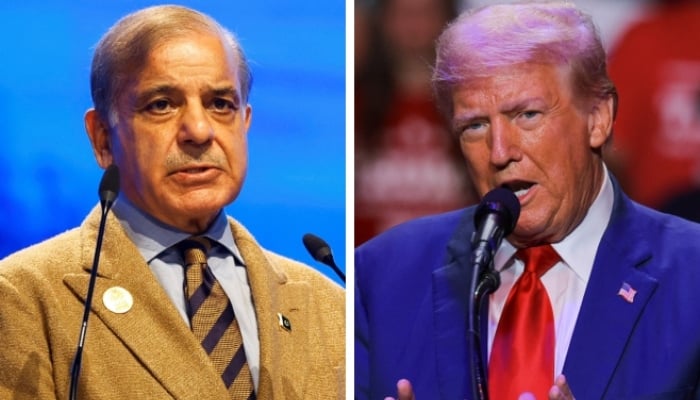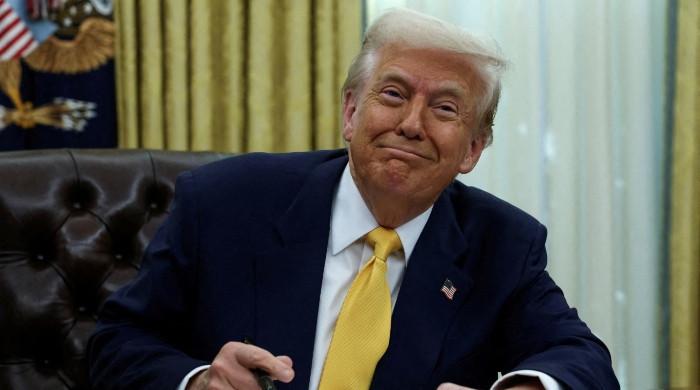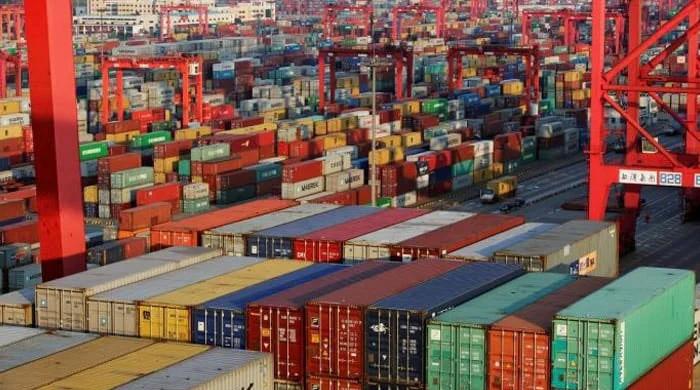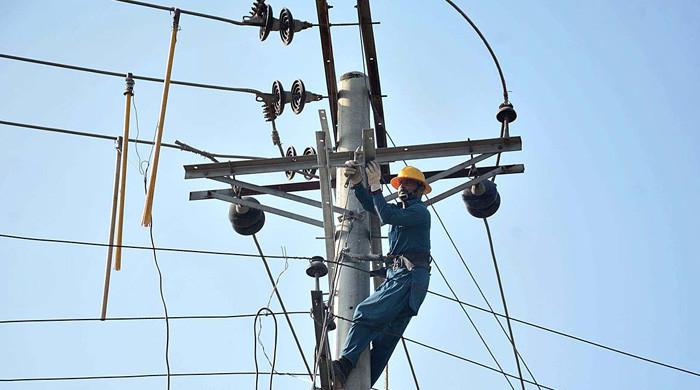How should Pakistan now shape its trade relationship with US
US is the largest trading partner of Pakistan but its trade balance is in favour of Islamabad
April 04, 2025

ISLAMABAD: United States President Donald Trump has slapped unprecedented reciprocal tariff over 180 countries, including Pakistan, with Washington hiking tariffs on Islamabad's made-ups by 29%.
Currently, the tariff imposed by the USA on different products from Pakistan ranges from 0-2% to 29%; so, after the additional tariff in a few instances, the overall tariff would go up to 58%.
According to the US calculations, Pakistan had imposed an average tariff on the USA in the range of 58%, so it reciprocated it by slapping a 29% tariff on Pakistan-made-ups. The US is the largest trading partner of Pakistan, but its trade balance is in favour of Islamabad.
USA's major imports in 2024 stood from Mexico to the tune of $509.9 billion, China $462.6 billion, Canada $421.2 billion while its imports from India and Pakistan were standing at $91.2 billion and $5.47 billion, respectively.
Pakistan has to work on a two-pronged strategy: first secure its trade relationship with the USA by exporting more. Secondly, finding new trade markets and destinations for Pakistani products. Trade can go beyond textile and apparels.
There is certainly some increase in prices for textiles but there is an opportunity to re-negotiate with USA itemised duty rates.
Trade opportunity lies in exporting metals like copper, carpets and furniture, preparations of meat etc. can help in negotiations. Imposing tariffs, as a retaliation on the USA, goods would disrupt supply chains, dampen economic activity and exacerbate inflationary pressures. The major impact would be on textile.
The restricted trade partners may divert trade among friends. Trade will find alternative paths. The South collaborates and connects globally, seeking new avenues. This cooperation is multi-dimensional, spanning trade in respective currencies to a common currency.
New trade partnerships will emerge between Canada, Mexico, and China to avoid the increased costs. Pakistan needs to become part of major trading blocs. Using PTAs, FTA's would help in securing trade materials and raw materials at low costs.
The China-Pakistan Economic Corridor (CPEC) would connect Pakistan and China as well as with other regional countries including India and it may appear as the major trading route in South Asia.
This could lead to an increase in trade between countries not directly affected by the tariffs. For example, the European Union might become a more attractive trade partner for countries looking to avoid tariffs.
Incentives for domestic production could serve as a catalyst for economic growth, especially as imported goods become more expensive. However, there is a risk that local industries may struggle to meet demand, potentially leading to higher prices for consumers.
Pakistan must demonstrate its commitment to harmonising its tariff structure and eliminating existing anomalies. Unlike other countries that have adopted retaliatory tariff policies against the US, Pakistan is not in a position to do the same and must instead focus on internal economic reforms.
The imposition of reciprocal tariffs by major trading partners presents an opportunity to divert trade flows. To capitalise on this, a comprehensive industrial package should be introduced, which includes:
- Access to credit and grants for technology transfer
- Simplification of the tariff structure
- Elimination of tariff anomalies and excessive import taxes
While these measures may not fully resolve the trade deficit, they are crucial to supporting local businesses and maintaining economic stability.
Meanwhile, other nations may follow the US in imposing protectionist policies, making it essential for Pakistan to proactively strengthen its domestic market and trade resilience.
According to Top Line research, the US has imposed reciprocal tariffs on its trading partners including Pakistan, aiming to boost domestic manufacturing by making foreign imports expensive and to raise revenue.
The reciprocal duties range from 10-48%, which reportedly is in addition to the universal tariff of 10% on all countries. The reciprocal duties are imposed with the exception of Mexico and Canada, as these countries were subject to previously announced tariffs of 10-25%.
While certain goods from key industries i.e. steel, aluminum, automobiles, copper, pharmaceuticals, semiconductors, and lumber are also exempt from these rates.
US imports stand at US$3.36 trillion in 2024: US imported goods worth US$3.36 trillion in 2024, up 6% YoY as per data reported by Trade Map. Country wise, Mexico's share was highest in total imports of the USA at 15%, followed by China, Canada, Germany and Japan in the range of 5-14%.
Pakistan's share was only 0.16% in 2024, while countries like Vietnam, Bangladesh, Sri Lanka and India had a share of 4.2%, 0.26%, 0.09% and 2.7%, respectively.
US is the single largest export destination of Pakistan: Although imports from Pakistan in the US make only 0.16% of total US imports, the number is quite significant from Pakistan's perspective. Pakistan exports to the US are US$6bn annually, 18% of the total exports of the country.
Textile comprises 75-80% of Pakistan's exports to the US: textile is the largest category (75-80%) in total exports to the USA. While other exported products/commodities are leather, surgical goods, rice, cement, steel products, salt, etc., among others.
Peer countries are also affected by high tariffs: Pakistan's competitors in textile exports, like Vietnam, Bangladesh, and China, are also imposed with tariffs of 29-46%. While tariffs on India are at slightly lower rate of 26% vs. Pakistan's 29%.
In textile, Pakistan largely competes with China, India, Vietnam, Cambodia, Indonesia, and Bangladesh. The duties imposed on China, Cambodia, Indonesia, Vietnam and Bangladesh are higher than Pakistan, while duties imposed on India are 300bps lower than Pakistan (26% vs. 29%).
The type of textile products Pakistan is exporting to the US (product code 61, 62, 63 and 52) are also exported by India which has a duty advantage. Similar products are also supplied by Bangladesh, Vietnam and China which have duty disadvantage.
Theoretically, due to Pakistan's duty disadvantage with India, Pakistan textile exports may face some pressure; however, higher duties on Bangladesh and Vietnam would provide some respite to Pakistan exports in the US.
Additionally, competition in the European market can increase as countries faced with higher tariffs i.e. China, Vietnam and Bangladesh may now divert some of their US exports to European countries, thus putting pressures on margins.
Company wise, in textile Interloop Limited (ILP), Feroz Mills (FML), Kohinoor Textile (KTML), Nishat Mills (NML), and Gul Ahmed (GATM) have the exposure to the US. While other than textile, Service Global Footwear (SGF), Matco Foods (MFL), Fast Cables (FCL), International Steels (ISL), International Industries (INIL), DG Khan Cement (DGKC), Power Cement (POWER), Mitchells Fruit Farms Limited (MFFL) have some exposure to the US as well. Apart from this, Pak Elektron (PAEL) also started exporting transformers to the US recently.
Originally published in The News











